Istanbul has lots of historical palaces that were used during the Ottoman reign. These buildings have served emperors, politicians, pashas, and sultans in the past. Now, some are used for events and sightseeing while nothing has survived from some or is not available to the public.
For its strategic location, most palaces of Istanbul are on the European side. The European side of Istanbul is more hilly and has a more varied landscape than the Asian side. Also, it is more defensible than the Asian side. This was because the European side is surrounded by the Bosphorus Strait and the Sea of Marmara. That’s why these palaces and pavilions are located on the European side of Istanbul:
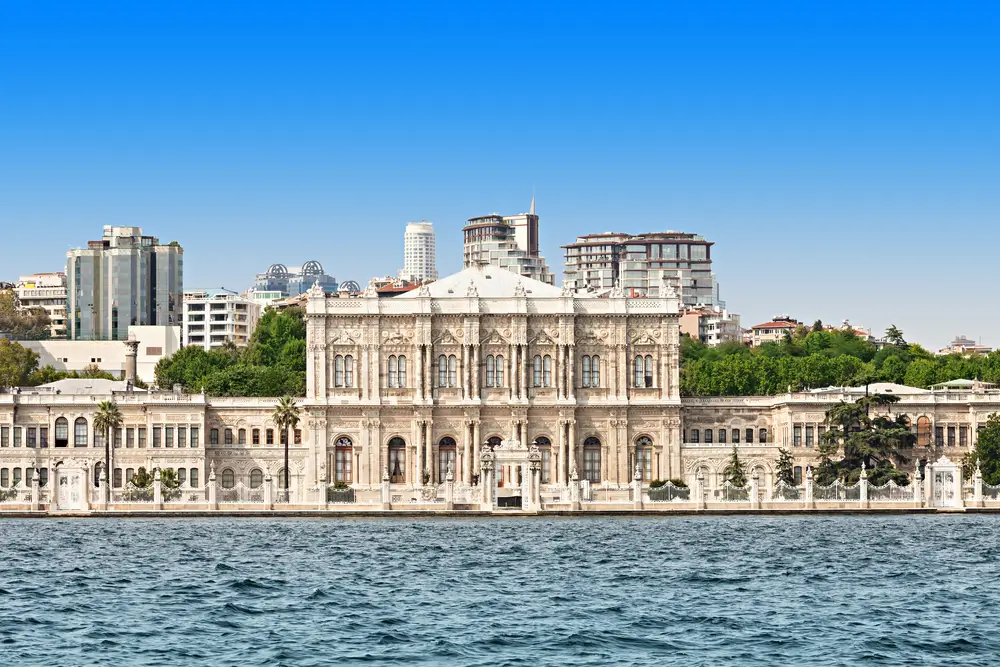
Dolmabahçe Palace 2023 entrance fee:
650 Turkish Liras
Dolmabahçe Palace visiting hours:
Open every day except Mondays from 9 AM to 6 PM.
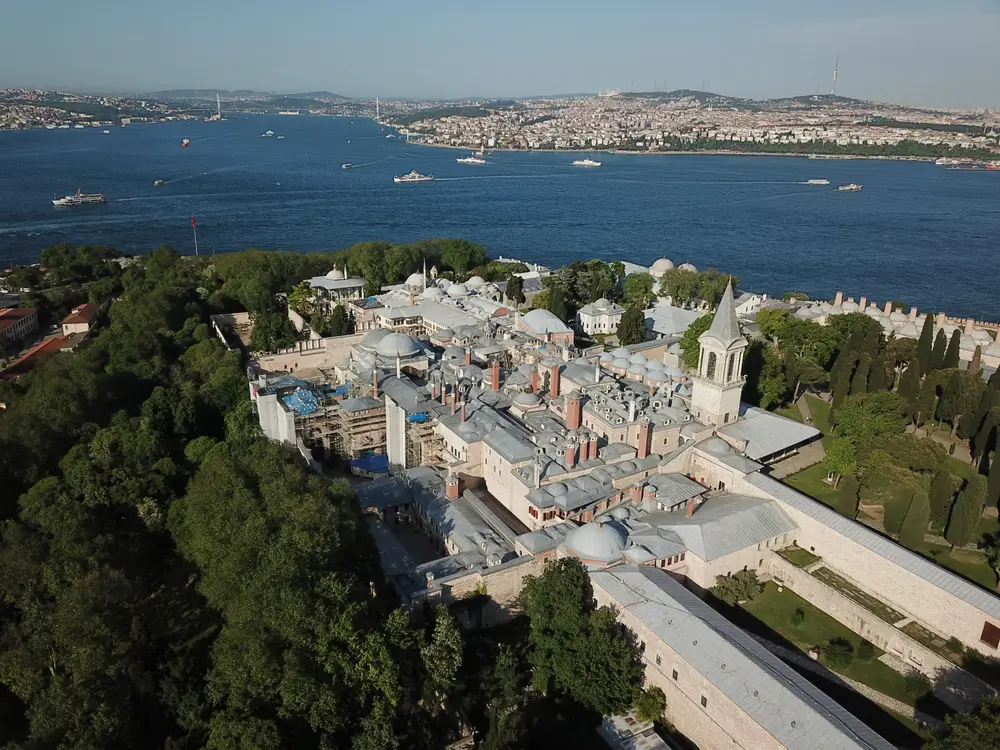
Topkapı Palace is a historical palace located in the Fatih district of Istanbul, Turkey. It was the main residence of the Ottoman sultans for over 400 years, from 1465 to 1856. The palace complex covers an area of 700,000 square meters and is enclosed by a 2.5-kilometer-long wall. It was built by the Ottoman sultan Mehmed the Conqueror after he conquered Constantinople in 1453. The palace was designed to be a symbol of the power and wealth of the Ottoman Empire. It was also a center of government, administration, and culture.
Topkapı Palace is home to a vast collection of art and artifacts, including the Holy Mantle of Muhammad, the Sword of Muhammad, and the Topkapi Dagger. It is also a UNESCO World Heritage Site.
Topkapi Palace 2023 entrance fees:
750 Turkish Liras. Additional 350 Turkish Liras for the harem section.
Topkapi Palace visiting hours:
Open every day except Tuesdays from 9 AM to 6 PM in the summer and 9 AM to 4:45 PM in the winter.
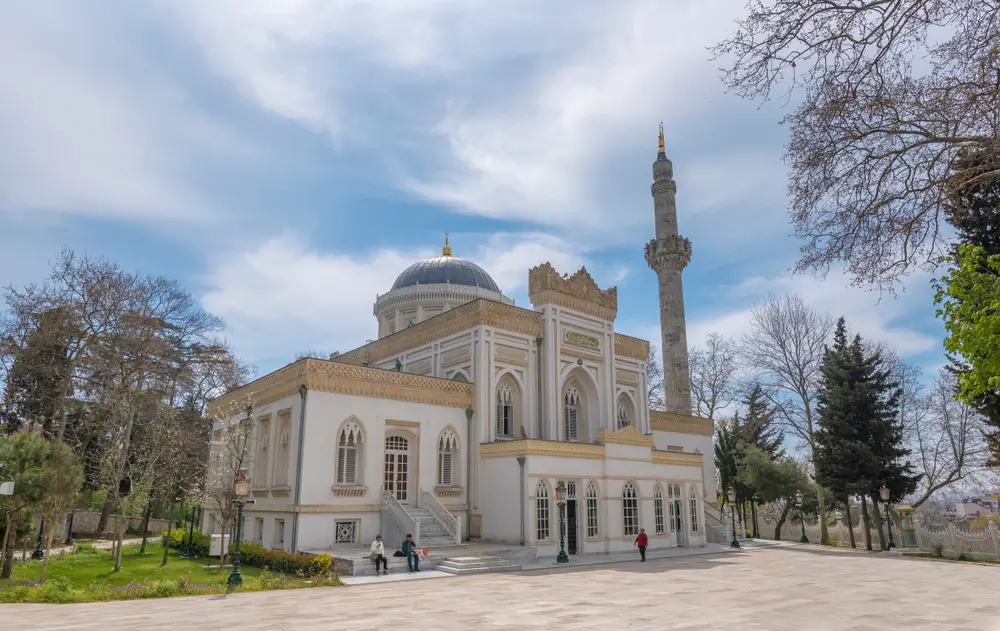
Yıldız Palace is a vast complex of former imperial Ottoman pavilions and villas in Beşiktaş, Istanbul, Turkey, built in the 19th and early 20th centuries. It was the seat of the Ottoman government from 1876 to 1887 and from 1909 to 1922. It was also the home of the last sultan of the Ottoman Empire, Mehmed VI.
Yıldız Palace was built on an area of 110 hectares of land that was originally used for hunting by the sultans. The first pavilion on the site was built in the late 18th century by Sultan Selim III for his mother, Mihrişah Sultan. In the 19th century, the palace was expanded by Mahmud II, Abdülmecid I, and Abdülaziz sultans.
The palace complex is divided into several sections, including the State Apartments, the Harem, the Çadır Pavilion, and the Malta Pavilion. The State Apartments were used for official functions, such as the reception of foreign dignitaries. The Harem was used for the personal quarters of the sultan and his family. The Çadır Pavilion was used for receptions and banquets. The Malta Pavilion was used as a prison for political prisoners.
Yıldız Palace 2023 entrance fees:
250 Turkish Liras. Additional 100 Turkish Liras to see the Şale Pavilion.
Yıldız Palace visiting hours:
Open every day except Mondays from 9 am to 5 pm.
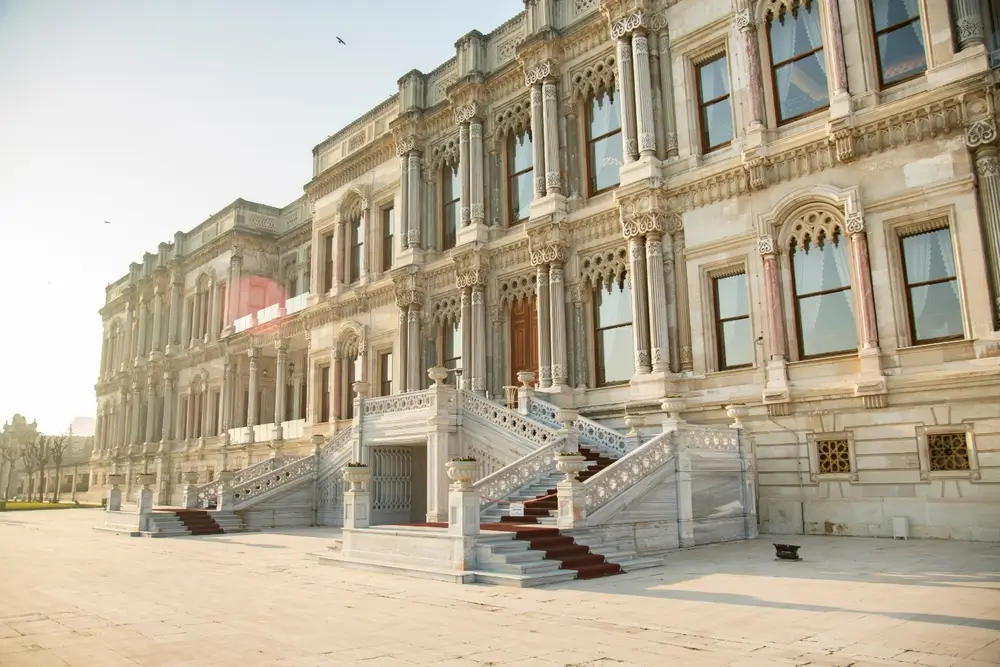
Çırağan Palace was built in the 18th century by Sultan Abdülmecid I. The palace was designed by the French architect Alexandre Vallaury and is a blend of European and Ottoman styles. The palace is made of white marble and has a long, sweeping facade that overlooks the Bosphorus. The palace was originally built as a summer residence for the sultan, but it was also used for official functions, such as the reception of foreign dignitaries. In 1910, the palace was destroyed by a fire. It was rebuilt in the 1980s and reopened as a hotel in 1992.
The palace has 317 rooms and suites, as well as a number of restaurants, bars, and lounges. The palace also has a spa, a fitness center, and a helipad. Additionally, you can have your wedding ceremony at Çırağan Palace if you want a memorable wedding in Istanbul!
As Çırağan Palace is now a luxury hotel, it is not open to the public for free visits. However, you can book a room at the hotel to stay there or you can book a table at one of the hotel’s restaurants to dine there.

Mediha Sultan Palace is a historic palace located in the Baltalimanı neighborhood of Sarıyer, Istanbul, Turkey. It is a Neoclassical mansion that was built in 1840 for the Sultan’s Grand Vizier Mustafa Reşit Pasha. The palace was later the residence of Sultan Abdülmecid’s daughter, Mediha Sultan, and her husband, Damat Ferid Pasha.
The palace is a two-story structure with a central dome and four wings. It has a total of 50 rooms, including the selamlık, harem, and a number of reception halls. It also has a large garden with a swimming pool and a pier.
Mediha Sultan Palace 2023 entrance fees:
60 Turkish Liras. Additional 20 Turkish Liras for an audio guide.
Mediha Sultan Palace visiting hours:
Open every day except Mondays from 9:00 AM to 5:00 PM.

Tekfur Palace is a 13th-century Byzantine palace located in the Edirnekapı district of Istanbul, Turkey. It was built as a royal residence for the Byzantine emperor’s family, but it later served as a fortress and a defense tower. The palace took its name from the term “porphyrogenitus,” which means “born in the purple,” referring to the status of emperors who were born to reigning monarchs.
It is one of the few remaining examples of Byzantine architecture. However, it was severely damaged during the Ottoman siege of Constantinople in 1453. Then restored by the Ottoman sultan Mehmed II, but it was never used as a royal residence again. Instead, it was used as a military barracks and a prison. In the 19th century, Tekfur Palace was used as a porcelain factory. In the 20th century, the palace was restored and opened to the public as a museum.
Tekfur Palace entrance fees October 2023:
40 Turkish LirasAdditional 20 Turkish Liras for an audio guide.
Tekfur Palace visiting hours:
Open every day except Mondays from 9:00 AM to 5:00 PM.
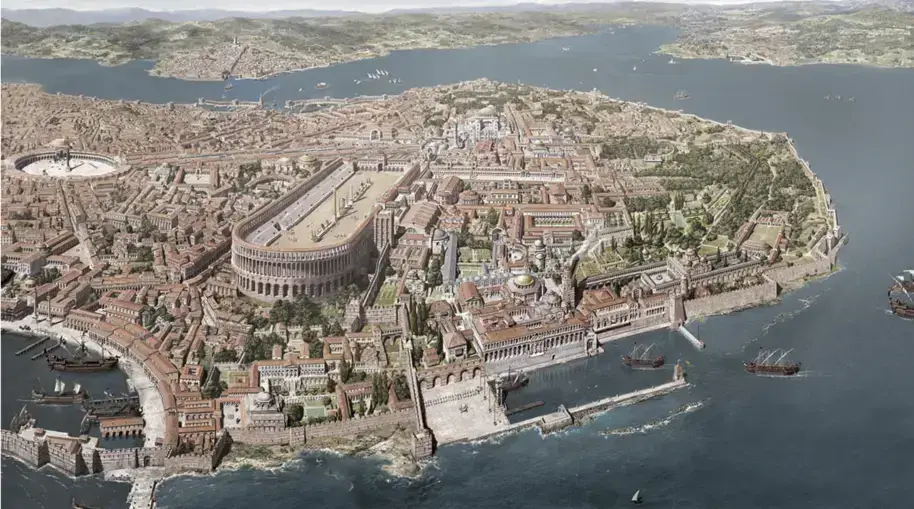
The Great Palace was built in the 4th century AD by the Byzantine emperor Constantine the Great. It was expanded and embellished over the centuries by subsequent emperors, and it became one of the most magnificent palaces in the world. The palace was decorated with lavish mosaics, frescoes, and sculptures, and it was filled with precious objects from all over the world.
However, the Great Palace was severely damaged during the Fourth Crusade in 1204. It was never fully restored. After the Ottoman conquest in 1453, the ruins of the Great Palace were used as a quarry for building materials. Currently, what remains of the Great Palace is quite minimal. A few ruins can still be seen in the Sultanahmet district of Istanbul, but most of the palace is buried beneath the city’s modern streets.
To see the remaining parts of the Great Palace of Constantinople, you should visit the Great Palace Mosaics Museum, which is located in the Sultanahmet district of Istanbul.
Great Palace Mosaics Museum 2023 entrance fee:
45 Turkish Liras.
Great Palace Mosaics Museum visiting hours:
The museum is open every day except Mondays from 9:30 AM to 7:30 PM.
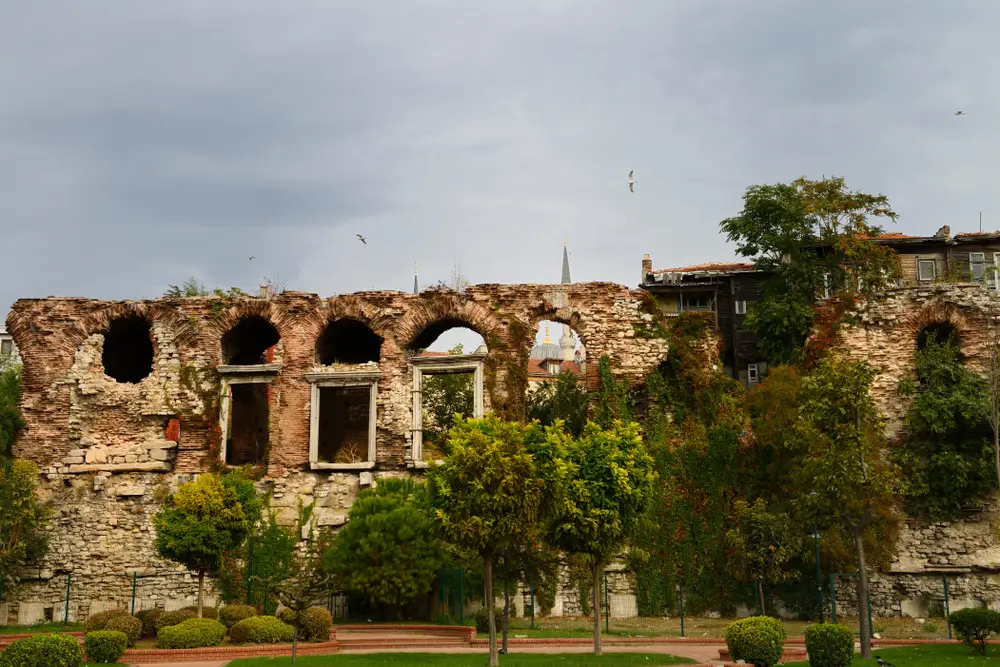
The Boukoleon Palace was built in the 5th century AD by the Byzantine emperor Theodosius II. The palace was decorated with mosaics, frescoes, and sculptures, and it was filled with precious objects from all over the world.
Similar to the Great Palace, The Boukoleon Palace was severely damaged during the Fourth Crusade in 1204. Now, nothing much of the building is remaining. However, you can visit the Istanbul Archaeological Museums to see the remaining artifacts from the palace, including mosaics, frescoes, and sculptures.
Istanbul Archaeological Museums 2023 entrance fee:
75 Turkish Liras.
Istanbul Archaeological Museums visiting hours:
The museums are open every day except Mondays from 9:00 AM to 5:00 PM.
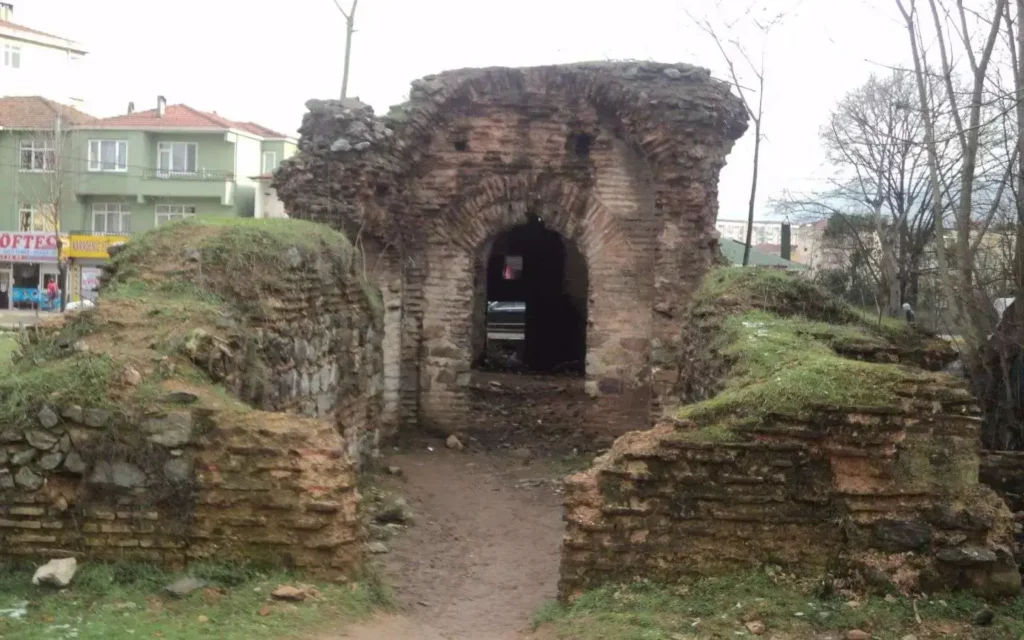
Damatrys Palace, also known as Samandıra Palace, is a ruined Byzantine palace located in the Samandıra neighborhood of the Sancaktepe district of Istanbul, Turkey. It was built in the 6th century AD by the Byzantine emperors Tiberius II Constantine and Maurice. The palace was a summer residence for the emperors and their families, and it was also a hunting lodge.
The Damatrys Palace was destroyed in the 11th century by the Seljuk Turks. The ruins of the palace were later used as a quarry for building materials. Today, very little remains of the Damatrys Palace. A few ruins can still be seen in the Samandıra neighborhood of Istanbul, but most of the palace is buried beneath the city’s modern streets.
The Damatrys Palace is open to the public and there is no entrance fee. But be careful while exploring the ruins because the area is not well-maintained.

The Palace of Mangana, also known as the Palace of Constantine Monomachus, was a Byzantine palace located in the Mangana quarter of Constantinople, on the eastern shore of the Golden Horn. It was built in the 11th century by the Byzantine emperor Constantine IX Monomachus.
It was destroyed in the Fourth Crusade in 1204. The Crusaders looted the palace and stole many of its treasures. Unfortunately, it was never rebuilt. Now, the few remains of the palace are located within the grounds of Topkapi Palace, and it is not open to the public.
Visitors who are interested in the Palace of Mangana can visit the Topkapi Palace Museum, to see the artifacts from the palace, including mosaics, frescoes, and sculptures.
Topkapi Palace 2023 entrance fees:
750 Turkish Liras. Additional 350 Turkish Liras for the harem section.
Topkapi Palace visiting hours:
Open every day except Tuesdays from 9 AM to 6 PM in the summer and 9 AM to 4:45 PM in the winter.

Ihlamur Pavilion is a former imperial Ottoman summer pavilion located in a valley between Beşiktaş and Nişantaşı. It was constructed during the reign of Sultan Abdülmecid. It is made of wood and stone and is decorated in a neo-Baroque style. Ihlamur means linden in English and the palace’s name comes from the linden trees surrounding the building.
The main building has three floors, and the roof is topped with a dome. There are also two smaller buildings on the grounds, one of which is used as a restaurant.
Ihlamur Pavilion 2023 entrance fee:
60 Turkish Liras.
Ihlamur Pavilion visiting hours:
Open every day from 9 AM to 6 PM.
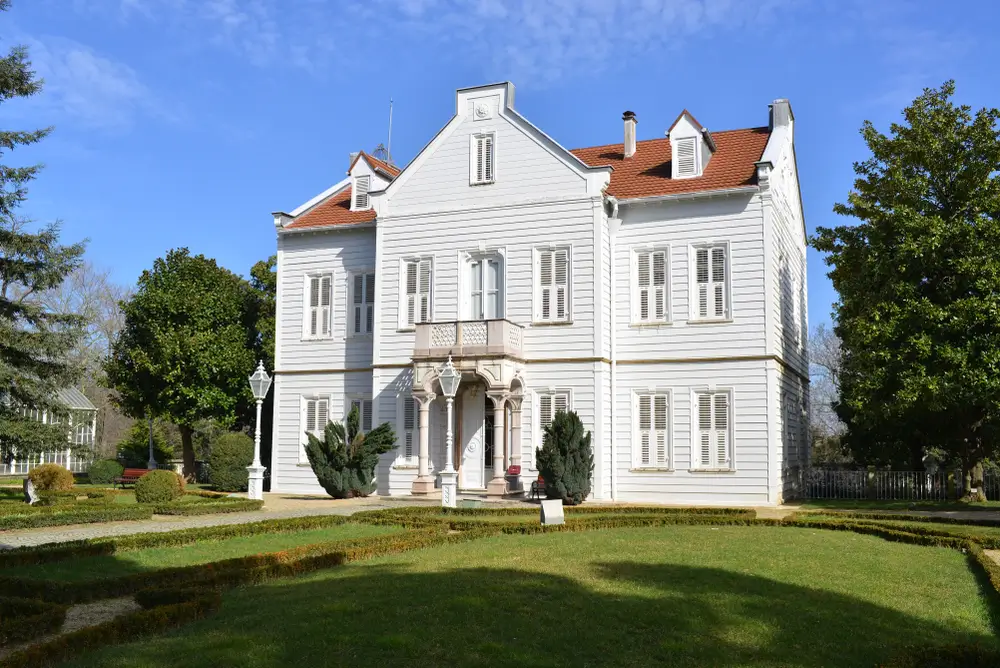
Maslak Pavilion, also known as Maçka Pavilion, is a former imperial Ottoman summer pavilion located in the Maslak district of Istanbul. It was constructed during the reign of Sultan Abdulmejid I in the mid-19th century and is one of the best-preserved examples of Ottoman wooden architecture in the city.
The pavilion is situated in a lush park surrounded by trees and flowers, and it offers stunning views of the Bosphorus Strait. The main building of the pavilion is two stories high and features a characteristic Ottoman wooden facade with overhanging eaves and a projecting balcony. The interior of the pavilion is lavishly decorated with marble floors, crystal chandeliers, and painted ceilings.
Maslak Pavilion 2023 entrance fee:
50 Turkish Liras.
Maslak Pavilion visiting hours
Open every day from 9:00 AM to 5:00 PM

Aynalıkavak Pavilion is a former Ottoman pavilion located in the Hasköy neighborhood of Beyoğlu district in Istanbul, Turkey. The pavilion is situated on the shores of the Golden Horn and it has stunning views of the city and the Bosphorus Strait.
It was constructed during the reign of Sultan Ahmed I (1603-1617), with various additions and changes over time. It is under the administration of the Turkish Directorate of National Palaces.
The most notable feature of the pavilion is its large, mirrored hall. This hall is said to have been inspired by the Hall of Mirrors at the Palace of Versailles. The mirrors were a gift to the Ottoman sultan from the Republic of Venice in 1699. Also, the building is made of wood and stone, and decorated in a classical Ottoman style. The main building of the pavilion is two stories high, and it features a large hall with a central pool and a fountain. There are also several smaller rooms, including a library, a music room, and a harem.
Aynalıkavak Pavilion 2023 entrance fee:
50 Turkish Liras.
Aynalıkavak Pavilion visiting hours:
Open every day from 9:00 AM to 5:00 PM.
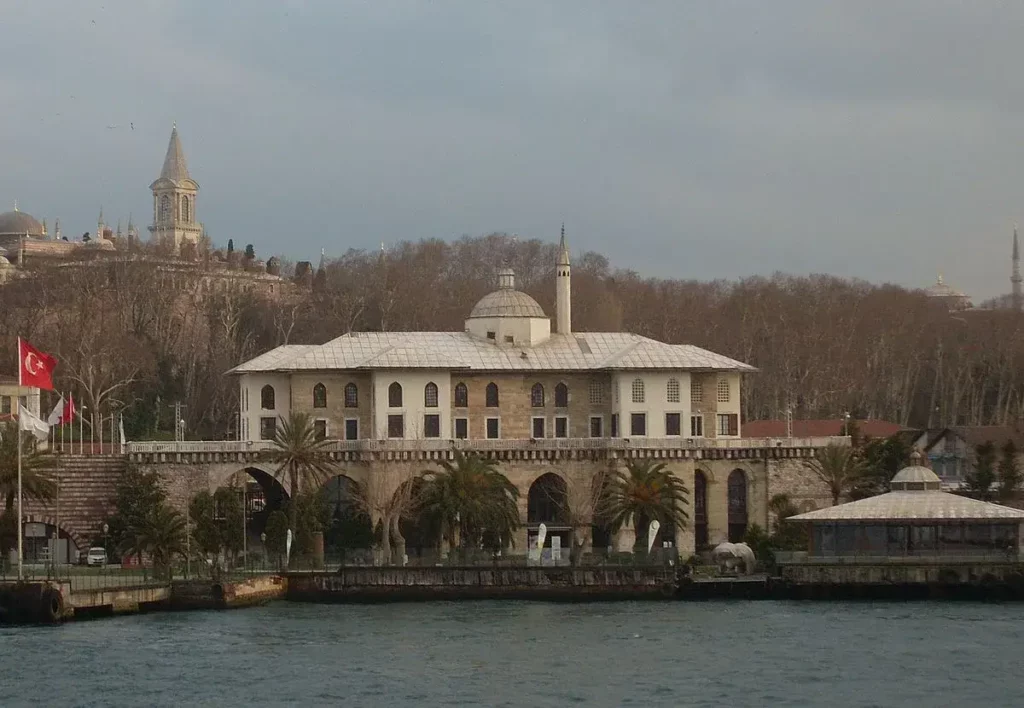
Sepetçiler Pavilion, also known as Basketmakers’ Pavilion, is a former imperial Ottoman pleasure palace located on the southern shore of Golden Horn’s mouth at Sarayburnu in the Fatih district of Istanbul. it was used by the Ottoman sultans and their families and also for state receptions and other official events.
Now, Sepetçiler Pavilion is used for organizations like weddings and breakfast gatherings. For this reason, it is not open to the public.

Tophane Pavilion, also known as the Tophane-i Amire Culture and Art Center, is a former imperial Ottoman foundry and gunpowder magazine located in the Tophane neighborhood of Beyoğlu district in Istanbul.
The pavilion was built in the 15th century during the reign of Sultan Mehmed the Conqueror, and it was originally used as a foundry and gunpowder magazine for the Ottoman navy. In the 19th century, the pavilion was converted into a cultural center. It was used to host concerts, exhibitions, and other cultural events. Today, the pavilion continues to be used as a cultural center, and it is also a popular tourist destination.
Tophane Pavilion 2023 entrance fee:
You can visit for free.
Tophane Pavilion visiting hours:
Open every day except Mondays from 9 AM to 6 PM.

Malta Pavilion is one of the annexes of Yıldız Palace, located in the outer garden of the palace and was built in 1870 by the order of Sultan Abdülmecit. The mansion was built in three sections. The central sections of the facade are large, while the side sections are smaller. On the side facing the Bosphorus, there are balconies on the second floor. The view of the Bosphorus from the balconies is like a dream.
Malta Mansion 2023 entrance fee:
You can visit for free.
Malta Mansion visiting hours:
Open every day from 9 AM to 6 PM.
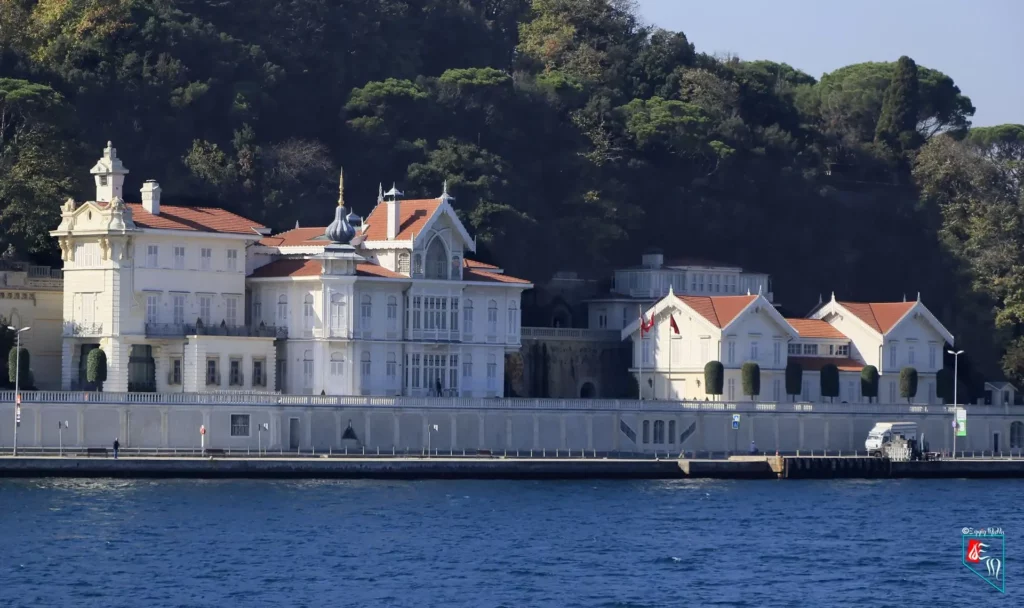
Huber Mansion is located on the Rumeli side of the Bosphorus, south of Tarabya Bay, on the road between Yeniköy and Tarabya. Behind the mansion, there is a grove that encompasses the entire slope descending to the Bosphorus. Apart from the main building, the Huber Mansion consists of a large barn, carriage house, outbuildings, and a greenhouse.
In the past, the Huber Mansion belonged to Auguste Huber and his family, one of the Huber brothers, who were arms dealers and brokers and represented the famous Krupp company in Istanbul. Since 1980, it has been used as the Presidential Residence of the Republic of Turkey. Huber Mansion has one of the rare groves of Istanbul.
The Huber Mansion is not a public building. Therefore, there is no known entrance fee. It is only used to host the Presidency’s senior management and foreign guests.
Istanbul’s Asian side is always calmer and greener than the European side. It is a more residential and less crowded area with historical palaces. For this reason, there are not as many palaces there when compared to the European side. The palaces and pavilions located on the Asian Side of Istanbul:

Coming from the location’s name, Beylerbeyi palace is located in Beylerbeyi, Üsküdar. Beylerbeyi Palace was used as a summer palace by its founder Sultan Abdülaziz. During the reigns of Sultan Abdülaziz and Abdülhamid II, the palace gained the function of a state guesthouse when it started to be allocated to foreign rulers or presidents during their official visits. The palace is 158 years old, built in 1865.
During the 33-year reign of Sultan Abdülhamid II, Beylerbeyi Palace also functioned as a museum visited especially by foreign state protocol. Now, the palace is under the National Palaces Directorate of the Presidency of the Republic of Turkey, serving as a museum for its visitors.
Inside the palace, you can see the furniture used in the past by sultans, and view the artistic structure and pieces of history. After you are done with the tour, enjoy the breeze of Bosphorus with the view of the European side. Don’t forget to see the little bamboo forest outside of the palace as well!
Beylerbeyi Palace 2023 entrance fee:
130 Turkish Liras.
Beylerbeyi Palace visiting hours:
Open every day except Mondays from 9 AM to 5:30 PM.

Adile Sultan Palace is located in Kandilli, Üsküdar. Named after Sultan Abdülmecit’s sister Adile Sultan, the palace was purchased in 1856 to be Adile Sultan’s summer residence and was rebuilt by Sultan Abdülaziz in 1861. Adile Sultan, known as the only female poet of the Ottoman dynasty to have a divan, is known to have contributed to the development of Kandilli, helped the poor, and was particularly interested in education. The palace, which was used as Kandilli Girls’ High School for a while, was restored with the donation of the late Sakıp Sabancı, a valuable businessman, after a fire in 1986.
Now, Adile Sultan Palace is used as an event spot for its large and spacious halls and the open area with the most special location of the Bosphorus. It provides a perfect venue for different organizations such as weddings, meetings, conferences, and seminars.

Küçüksu Pavilion is located Göksu, Beykoz. Sultan Abdülmecid had the old wooden structure in the area where the Küçüksu Pavilion was located demolished and the present pavilion was built in its place in 1857. During the reign of Sultan Abdülaziz, the façade decorations were overhauled and enriched. Western ornamental motifs were used on the sea façade decorated with reliefs, the small pool with a fountain leaning against this façade, and the stairs. The rooms and halls were furnished with valuable works of art and furniture ordered from Europe.
Küçüksu Pavilion is decorated with gypsum relief and calligraphy, fireplaces made of Italian marble of different colors and shapes resembling a fireplace museum, parquet floors with different ornaments and fine workmanship in each room, furniture in European styles, carpets and paintings. It was used as a state guesthouse for a while during the Republican Period. In 1992, a comprehensive restoration project prevented the Küçüksu Pavilion from sliding into the sea and it was reopened as a museum and palace in 1996.
Küçüksu Pavilion 2023 entrance fee:
30 Turkish Liras.
Küçüksu Pavilion visiting hours:
Open every day except Mondays from 9 AM to 5 PM.

Beykoz Mecidiye Pavilion is located in Yalıköy, Beykoz. The construction of the pavilion was started in 1845 by Mehmet Ali Pasha, the governor of Egypt; upon his death, it was completed by his son in 1854 and presented to Sultan Abdülmecid.
In its early years, the pavilion was used by the sultan as a boarding pavilion for daily stays. In later periods, it was used to receive foreign dignitaries and ambassadors. Although it was a sultanate building, it was allocated to public service during the Ottoman period and was turned into a home for orphans. During the Republican period, the interior structure of the building underwent some changes as it was used both as a hospital and a precentorium. Finally, Beykoz Pavilion was allocated to the Department of National Palaces in 1997 and received empty in 1999. After the restorations were done in 2011, the pavilion reopened to the public.
Beykoz Mecidiye Pavilion 2023 entrance fee:
100 Turkish Liras.
Beykoz Mecidiye Pavilion visiting hours:
Open every day except Mondays from 9 AM to 5 PM.
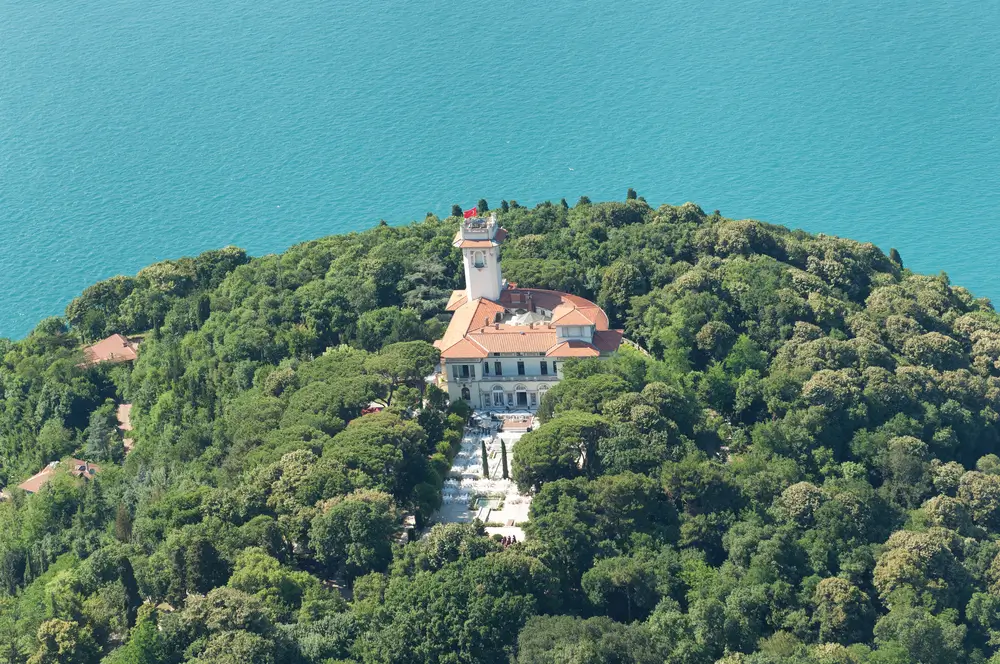
The Hıdiv Pavilion was built on the Çubuklu ridges in the Beykoz district of Istanbul in 1907 by the last khedive of Egypt, Abbas Hilmi Pasha, to the Italian architect Delfo Seminati. It is in art nouveau style in accordance with the architectural fashion of the period. The building itself has one of the first steam-powered elevators of its time. Then, the Hidiv Pavilion was sold to the Istanbul Municipality.
After a long period of neglect, the pavilion was restored by Çelik Gülersoy on behalf of the Turkish Touring and Automobile Association in 1984 and served as a hotel for a while. Restored again between 1994 and 1996, the management of Hidiv Pavilion was transferred to Beltur, an organization of Istanbul Metropolitan Municipality, in 1996. It is currently used as a restaurant and social facility. Organizations such as weddings are also organized in the exterior of the pavilion, which is one of the largest rose gardens of Istanbul on one side of the pavilion, and in its historical interior. The grove and steep walking path behind the pavilion are utilized by sports and hiking enthusiasts.
Hidiv Pavilion 2023 entrance fee:
You can visit for free.
Hidiv Pavilion visiting hours:
Open 24 hours every day.